Capsule Review: 2012 Hyundai Azera
Hyundai’s press materials list the 2012 Azera’s competitors as “…traditional large sedan sales leaders such as Maxima, Lacrosse, Avalon and Taurus.” But those cars were on the minds of exactly no one at the Las Vegas launch of the 2012 Azera. Only the Lexus ES350, the market’s leading 4-wheeled sensory deprivation tank, was on the lips of the assembled journos when talking about the Azera’s competition. Hyundai didn’t give us much time with the car, but one thing was clear.
The Azera is still not a match for the Lexus ES350. To be sure, the Azera is competitive with the “Big Four” full-size sedans mentioned above. But a loaded Azera, at $36,825, is only $775 less than the base price of a Lexus ES350. Hyundai can compare this car to the Taurus and Lacrosse as much as they want, but the public at large, looking superficially at the pricing structure (base price is $32,825, including destination. The Technology package, the car’s sole option, commands a $4,000 premium), and Hyundai’s newly minted premium image, will inevitably compare this car to the big front-drive Lexus.
When they do, they are going to be disappointed. The Lexus cabin is as quiet as Yankee Stadium was when Lou Gherig gave his final address. At 80 mph, the Azera lets in a staggering amount of wind noise, and dropping down to the double nickel only remedies this slightly. The Azera’s wind noise issue left the biggest impression on me, overshadowing all of the car’s other attributes – not a good sign in a segment that privileges isolation from the road above almost everything else. The interior, while more modern looking than the Lexus, isn’t a match for the ES350’s cabin, which is a superlative experience, “rebadged Camry” comments be damned. The quality of the Azera’s materials still feels a grade below the Lexus – eyeing the slightly wonky fit of one interior panel, my driving partner noted that when it comes to the ES “this is what you don’t get with that extra few grand you spend”.
It was difficult to glean any serious driving impressions of the Azera. We drove it on the exact same pin-straight, baby-bottom-smooth Nevada highways that we did with the Genesis Coupe. And that was it. One Hyundai PR rep asked me if I was even going to write about the Azera, offering me the chance to drive a Genesis Coupe 2.0T on the way back. Hyundai CEO John Krafcik, who rode in the back seat while I drove home from the track, wouldn’t even give me a firm sales number for the car – in fact there was no quantitative number mentioned whatsoever. Apparently, allocation for the United States depends on sales of the Azera in South Korea – a market where the car has always done well – but this hardly seems like a vote of confidence for the Azera’s prospects over here. My 45 minute drive under ideal road and weather conditions was not adequate to get a real sense of the car.
In its home market of Korea, the Hyundai Grandeur (as it’s known) has traditionally been something of a status symbol, driven by politicians, business leaders and other members of Korea’s elite. In America, the car has always been something of an oddity, whether it was sold as the gaudy, baroque XG350 or the previous generation Azera, an elegant if underwhelming sedan that made a great rental car. The lack of any confidence in a public sales target, let alone any serious seat time for us journalists, suggests that Hyundai has low expectations for this car, and that it will remain an oddity that consumers overlook in favor of the cheaper Sonata or the flashier Genesis.
The Azera is a nice car, even if it’s priced a bit too close to the Lexus ES. On the other hand, it’s priced smack dab in the middle of the Maxima, Lacrosse, Avalon and Taurus, and has a number of distinct advantages over the competition; it lacks the annoying MyFordTouch system of the Taurus, is a more civilized car than the Maxima, is more engaging to drive than the Lacrosse and the Avalon and gets better fuel economy than any of them; 20/29 mpg with a combined rating of 23 mpg from its 293-horsepower 3.3L V6 engine. Positioned as the next step up from a Sonata (which can only be ordered with a 4-cylinder engine), Hyundai justifies the $32,000 starting price by claiming that the 2012 Azera comes with far more standard equipment than the outgoing model’s top trim level. The Azera has lots of content; Hyundai’s BlueLink telematics system, a 7-inch LCD screen, navigation, a rear-view camera and heated seats front and rear are all standard. The Technology package adds a full-length glass sunroof, parking sensors, a power tilt and telescoping wheel, 19” wheels and rear sunshades among other items.
While Hyundai had a media blitz for the Azera at this past weekend’s Academy Awards (and a media driving impressions embargo that lifted immediately afterwards), their sales strategy seems unusually tepid for a normally aggressive company. Initial impressions of the car seem to align with our usual take on Hyundai vehicles – a solid value choice, better than most of the field but not quite a segment leader. It’s possible that with South Korea taking much of the volume, Hyundai can move a relatively small number of Azeras Stateside without having to worry about big sales volumes – or dumping their inventory into fleets, where nearly half of full-size cars end up.
More by Derek Kreindler
Latest Car Reviews
Read moreLatest Product Reviews
Read moreRecent Comments
- Redapple2 Love the wheels
- Redapple2 Good luck to them. They used to make great cars. 510. 240Z, Sentra SE-R. Maxima. Frontier.
- Joe65688619 Under Ghosn they went through the same short-term bottom-line thinking that GM did in the 80s/90s, and they have not recovered say, to their heyday in the 50s and 60s in terms of market share and innovation. Poor design decisions (a CVT in their front-wheel drive "4-Door Sports Car", model overlap in a poorly performing segment (they never needed the Altima AND the Maxima...what they needed was one vehicle with different drivetrain, including hybrid, to compete with the Accord/Camry, and decontenting their vehicles: My 2012 QX56 (I know, not a Nissan, but the same holds for the Armada) had power rear windows in the cargo area that could vent, a glass hatch on the back door that could be opened separate from the whole liftgate (in such a tall vehicle, kinda essential if you have it in a garage and want to load the trunk without having to open the garage door to make room for the lift gate), a nice driver's side folding armrest, and a few other quality-of-life details absent from my 2018 QX80. In a competitive market this attention to detai is can be the differentiator that sell cars. Now they are caught in the middle of the market, competing more with Hyundai and Kia and selling discounted vehicles near the same price points, but losing money on them. They invested also invested a lot in niche platforms. The Leaf was one of the first full EVs, but never really evolved. They misjudged the market - luxury EVs are selling, small budget models not so much. Variable compression engines offering little in terms of real-world power or tech, let a lot of complexity that is leading to higher failure rates. Aside from the Z and GT-R (low volume models), not much forced induction (whether your a fan or not, look at what Honda did with the CR-V and Acura RDX - same chassis, slap a turbo on it, make it nicer inside, and now you can sell it as a semi-premium brand with higher markup). That said, I do believe they retain the technical and engineering capability to do far better. About time management realized they need to make smarter investments and understand their markets better.
- Kwik_Shift_Pro4X Off-road fluff on vehicles that should not be off road needs to die.
- Kwik_Shift_Pro4X Saw this posted on social media; “Just bought a 2023 Tundra with the 14" screen. Let my son borrow it for the afternoon, he connected his phone to listen to his iTunes.The next day my insurance company raised my rates and added my son to my policy. The email said that a private company showed that my son drove the vehicle. He already had his own vehicle that he was insuring.My insurance company demanded he give all his insurance info and some private info for proof. He declined for privacy reasons and my insurance cancelled my policy.These new vehicles with their tech are on condition that we give up our privacy to enter their world. It's not worth it people.”




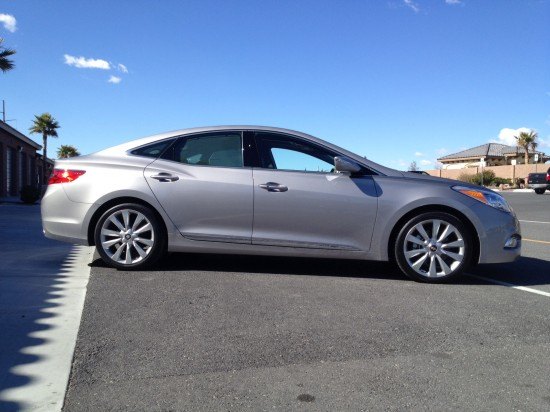













































































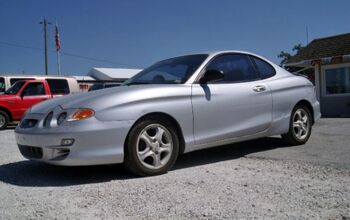

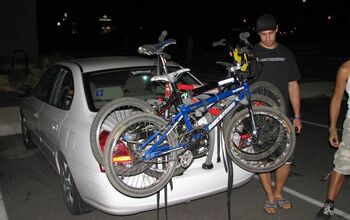
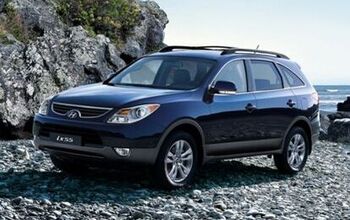
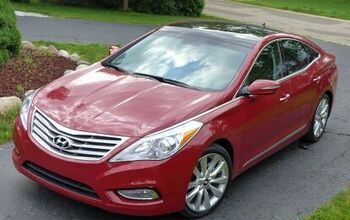










Comments
Join the conversation
The interior looks more like a 23K car than one starting close to 33 large. The wind noise in unfortunate. Still I think in some ways it out LaCrosses the Buick and out does the Taurus with lower curbweight, larger trunk than the pathetic Buick, better mileage, better warranty than either and far more equipment for the $$$.
Clearly, there is still a market for large FWD V-6 powered sedans. I think the Azera will do well. It certainly is good-looking.